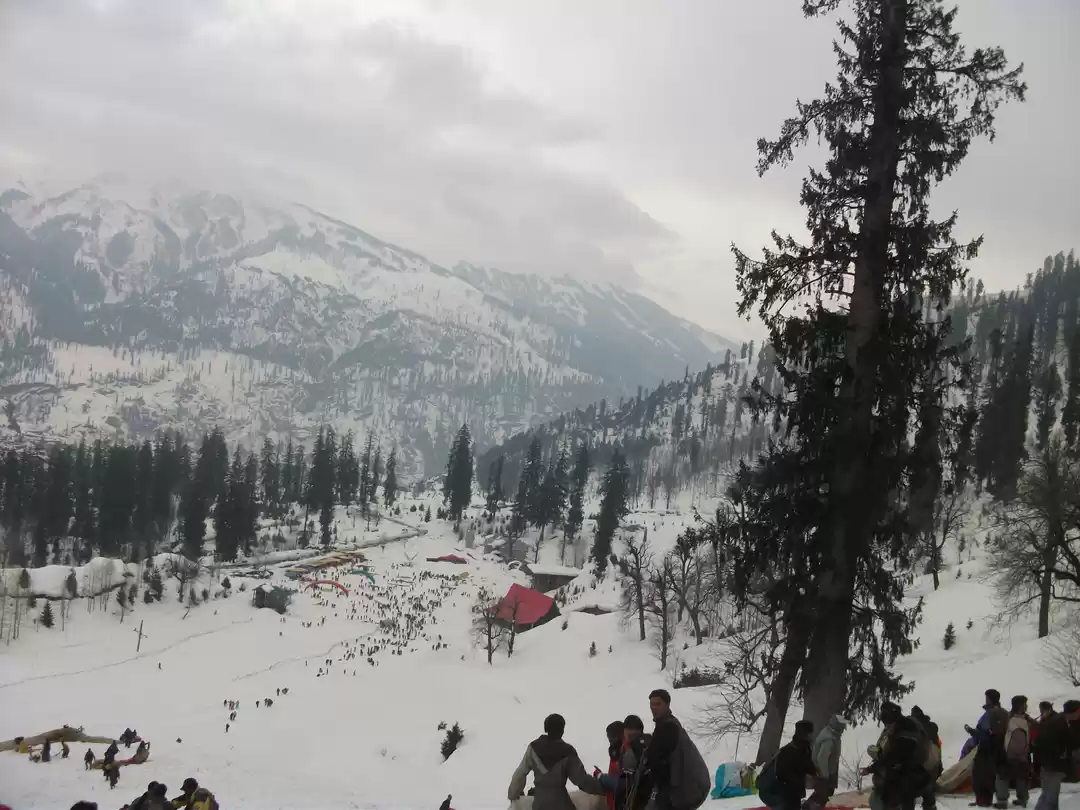Have you ever wondered what lies beyond the snow-capped mountains and serene lakes of Kashmir? If you are looking for a place that will take you back in time and reveal the secrets of a forgotten civilization, then you should visit the Martand Sun Temple. This magnificent temple, dedicated to the Sun God, is one of the most impressive and mysterious monuments of Kashmir’s ancient glory. In this article, we will tell you everything you need to know about the Martand Sun Temple, such as its history, architecture, significance, and tips for visiting. We will also suggest some nearby attractions and places that you can explore along with the temple. So, let’s get started!

History of the Martand Sun Temple
The Martand Sun Temple is located in the village of Mattan, about 9 km from the town of Anantnag, in the Indian union territory of Jammu and Kashmir. The temple was built by Lalitaditya Muktapida, the fifth ruler of the Karkota Dynasty, who ruled Kashmir from 724 to 760 CE. Lalitaditya was a powerful and ambitious king, who expanded his empire to Central Asia, Tibet, and parts of India. He was also a patron of art, culture, and religion, and built many temples, palaces, and cities during his reign.
The Martand Sun Temple was one of his most splendid creations, and a testimony to his devotion to Surya, the Sun God. The temple was built on a plateau overlooking the Kashmir Valley, and was designed to capture the rays of the sun throughout the day. The temple was also a center of learning and worship, and attracted scholars, pilgrims, and tourists from far and wide. According to some sources, the temple had a golden image of Surya, which was adorned with precious jewels and pearls.
The temple enjoyed a long and prosperous history, until it was destroyed by Sikandar Butshikan, the seventh ruler of the Shah Miri Dynasty, who ruled Kashmir from 1389 to 1413 CE. Sikandar was a fanatical Muslim, who persecuted the Hindus and Buddhists of Kashmir, and demolished their temples and idols. He ordered his army to raze the Martand Sun Temple to the ground, and used its stones and bricks to build mosques and bridges. The temple was reduced to a ruin, and its treasures were looted and lost.
The Martand Sun Temple remained in a state of neglect and decay for centuries, until it was rediscovered and studied by the British archaeologists and historians in the 19th and 20th centuries. They documented and photographed the temple, and praised its beauty and grandeur. They also tried to restore and preserve the temple, but faced many challenges and difficulties. The temple is now a protected monument under the Archaeological Survey of India, and a popular tourist attraction.
Architecture of the Martand Sun Temple
The Martand Sun Temple is a masterpiece of Kashmiri Hindu architecture, which is a blend of Gandhara, Gupta, Chinese, Roman, and Persian influences. The temple is built in a rectangular plan, measuring about 220 by 142 feet, and surrounded by a massive stone wall. The temple consists of three parts: the garbhagriha (sanctum sanctorum), the antarala (vestibule), and the mandapa (pillared hall).
The garbhagriha is the main shrine, where the image of Surya was enshrined. It is located at the center of the temple complex, and faces east. It is a square structure, with a pyramidal roof and a circular base. The garbhagriha is connected to the antarala, which is a small chamber that leads to the mandapa. The mandapa is a large hall, supported by 84 columns, arranged in four rows. The mandapa has four entrances, one on each side, and is open to the sky.
The most striking feature of the temple is the colonnade, which encircles the entire complex. The colonnade consists of 84 fluted pillars, with ornate capitals and bases. The pillars are carved with various motifs, such as floral, geometric, animal, and human figures. The colonnade also has a series of arches, which span between the pillars, and create a graceful and elegant effect. The arches are decorated with trefoil and horseshoe shapes, which are typical of Kashmiri Hindu architecture.
The temple is also adorned with various sculptures, which depict the gods, goddesses, and scenes from Hindu mythology. The most prominent sculptures are those of Surya, who is shown in different aspects and poses. Some of the sculptures are damaged or missing, but they still reveal the skill and craftsmanship of the ancient artists. The temple also has some inscriptions, which record the names and dates of the builders, donors, and rulers associated with the temple.
Significance of the Martand Sun Temple
The Martand Sun Temple is not only a remarkable monument of architecture, but also a symbol of the history, culture, and heritage of Kashmir. The temple represents the glory and achievements of the Karkota Dynasty, which was one of the most powerful and prosperous dynasties of Kashmir. The temple also reflects the religious and cultural diversity of Kashmir, which was a melting pot of Hinduism, Buddhism, and Islam. The temple also showcases the artistic and aesthetic excellence of the Kashmiri Hindu artists, who created a unique and distinctive style of art and architecture.
The Martand Sun Temple is also a source of inspiration and pride for the people of Kashmir, who have endured many hardships and struggles over the centuries. The temple is a reminder of their resilience and courage, and their love and reverence for their land and culture. The temple is also a symbol of hope and peace, and a bridge between the past and the present. The temple is a living heritage, which connects the generations and communities of Kashmir.
Tips for Visiting the Martand Sun Temple
If you are planning to visit the Martand Sun Temple, here are some tips that will help you make the most of your trip:
- The best time to visit the Martand Sun Temple is between April and October, when the weather is pleasant and the scenery is beautiful. The temple is open from sunrise to sunset, and there is no entry fee. However, you may have to pay a nominal fee for photography or videography.
- The Martand Sun Temple is easily accessible by road, as it is located on the Srinagar-Jammu National Highway. You can take a bus, taxi, or car from Srinagar, Anantnag, or any other nearby town. The temple is about 64 km from Srinagar, and the journey takes about 2 hours. You can also take a train to Anantnag, and then hire a local transport to the temple.
- The Martand Sun Temple is a sacred and historical site, and you should respect its sanctity and dignity. You should dress modestly and appropriately, and avoid any loud or offensive behavior. You should also refrain from littering or damaging the temple premises, and follow the instructions of the authorities and guides.
- The Martand Sun Temple is a great place to learn and explore, and you should take your time to admire and appreciate its beauty and significance. You can also hire a guide or buy a booklet, which will provide you with more information and insights about the temple. You can also interact with the locals, who will share their stories and legends about the temple.
- The Martand Sun Temple is also a great place to enjoy the nature and culture of Kashmir, and you should not miss the opportunity to visit some nearby attractions and places. Some of the places that you can visit along with the temple are:
Kokernag: A scenic hill station, famous for its springs, gardens, and trout fish.
Verinag: The source of the Jhelum River, and a beautiful Mughal garden.
Achabal: Another Mughal garden, with fountains, pavilions, and orchards.
Daksum: A picturesque valley, with forests, streams, and waterfalls.
Pahalgam: A popular tourist destination, with meadows, mountains, and rivers.
Conclusion
The Martand Sun Temple is a must-visit place for anyone who wants to experience the history, culture, and heritage of Kashmir. The temple is a stunning example of Kashmir’s ancient glory, and a testimony to its religious and cultural diversity. The temple is also a living heritage, which connects the past and the present, and inspires hope and peace. The temple is also a gateway to the nature and culture of Kashmir, and a perfect place to enjoy its beauty and charm. So, what are you waiting for? Plan your trip to the Martand Sun Temple, and discover a lost treasure of Kashmir’s ancient glory.
We hope you enjoyed this article, and found it informative and helpful. If you have any questions or feedback, please let us know. We would love to hear from you.

























